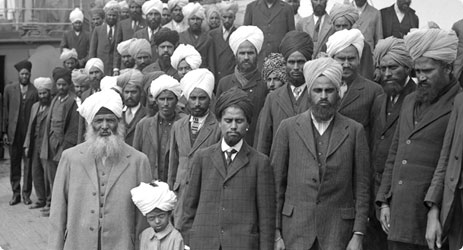Highlights of Choose Your Voice
Choose Your Voice offers four action-packed units that explore prejudice, stereotypes, and historical oppression. Students will learn from a variety of media, lessons, activities and discussions, with opportunities to brainstorm, share and compare, participate in class discussions and create graphic organizers. In original five-minute documentary videos, narratives of historical events are described first-hand by survivors.
Written by teachers for teachers, the lessons that follow are easy to use, thought-provoking and powerful. First Nations, Muslims, Jews, and Sikhs are represented in the resources to offer students a wide range of perspectives and well-rounded education on the topics presented.

Curriculum Connections
Choose Your Voice supports learning outcomes for grades 6, 7 and 8. View curriculum connections for each Canadian province and territory.
For higher grades, visit the Voices Into Action site.
All resources are provided free of charge, and include:
- Award-winning videos with compelling messages about the dangers of racism
- Lesson plans with multiple activities
- Fact sheets, featuring incidents involving a range of communities, support the goals of the lessons
Why do we ask you to register?
Registering provides us with valuable information about the number of educators and schools using our programs. This helps us provide data to donors and stakeholders who support this project financially.
Registering also enables us to inform you about upcoming webinars for teachers. We do not share your information with anyone.
UNIT 1
The Voices of Stereotypes
Teaches students the concept of stereotyping, helping them to understand how powerful and hurtful stereotyping is to everyone.
Materials include:
UNIT 2
Voices from the Past
Highlights racist policies and experiences in Canada’s past. Students learn that hateful acts involve victims, bystanders, and perpetrators.
Materials include:
Fact sheets:
UNIT 3
Voices from the Present
Builds students’ awareness of hate crime incidents and helps them understand the components of a hate crime.
Materials include:
Fact sheets:
UNIT 4
Choose Your Voice
Moves from history into reflection by examining real-world heroes. Students identify possible strategies for responding to prejudice and hate-filled incidents.
